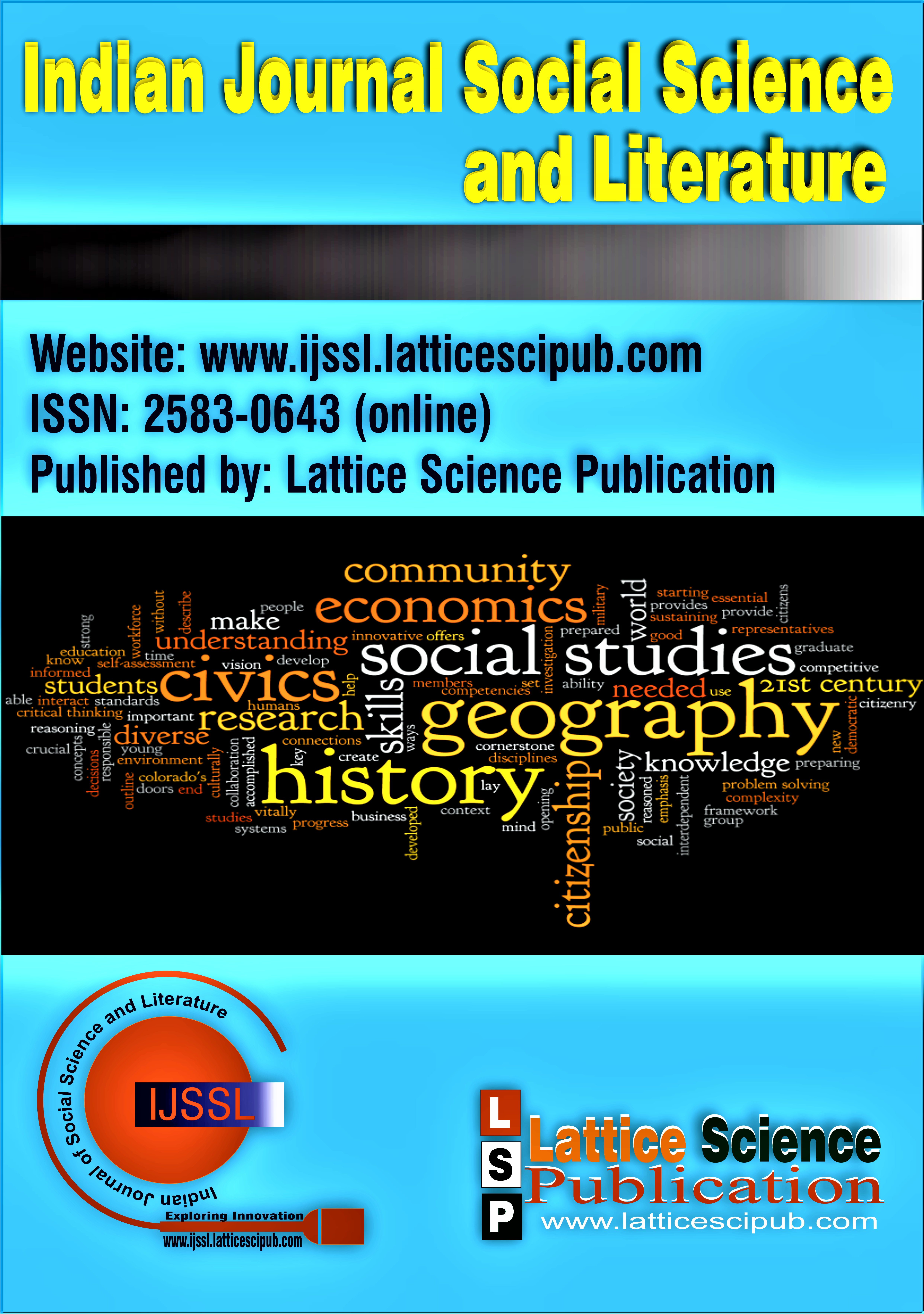Understanding the Concept of Family Dynamics
Main Article Content
Abstract
The main objective of this research paper is to acquire an efficient understanding of concept of family dynamics. Family members establish the foundation from where learning, growth and development of individuals takes place. The individuals are required to be well-versed in terms of different techniques, which would be facilitating in reinforcing cordiality and amiability in terms and relationships. The family members are different from each other in terms of age groups and genders. Hence, they are required to form positive viewpoints in terms of various factors. One of the important aspects that needs to be taken into account is, individuals are required to depict the traits of politeness, kind-heartedness, helpfulness, co-operation and generosity. The family members are the first and foremost individuals, who are approached, in cases of being overwhelmed by different types of problems and challenging situations. The family members render an important contribution in preparing individuals in terms of ways that would be facilitating in coping with these in an effective manner. Hence, it is well-understood, these would be facilitating in promoting enrichment of family dynamics. Therefore, acquiring an efficient understanding of the concept of family dynamics will be facilitating in reinforcing traits of morality and ethics. The main concepts that are taken into account in this research paper are, understanding the meaning and significance of family dynamics, measures to be implemented in reinforcing family dynamics and advantages of reinforcing family dynamics.
Downloads
Article Details

This work is licensed under a Creative Commons Attribution-NonCommercial-NoDerivatives 4.0 International License.
How to Cite
References
Ageing Parents the Family Survival Guide. (n.d.). Action Guide.
Retrieved September 13, 2023 from
https://www.episcopalchurch.org/files/Aging_Parents__A_Survival_A
ction_Guide%282%29.pdf
Mooney, A., Oliver, C., & Smith, M. (2009). Impact of Family
Breakdown on Children’s Well-being. Evidence Review. Institute of
Education. University of London. Retrieved September 13, 2023 from
http://dera.ioe.ac.uk/11165/1/DCSF-RR113.pdf
Singh, J.P. (n.d.). Problems of India’s Changing Family and State
Intervention. Retrieved September 13, 2023 from
http://www.un.org/esa/socdev/family/docs/egm09/Singh.pdf
Sonawat, R. (2001). Understanding Families in India: A Reflection of
Societal Changes. Mai-Ago, 17(2), 177-186. Retrieved September 13,
from http://www.scielo.br/pdf/ptp/v17n2/7878.pdf
The Indian Family System. (n.d.). Retrieved September 13, 2023 from
http://shodhganga.inflibnet.ac.in/bitstream/10603/8117/10/10_chapter
%202.pdf
Rabha, F. H., & Singh, Dr. N. R. (2022). Facebook as an Agent to Tackle
Climate Change with Reference to University Students in Assam. In
Indian Journal of Social Science and Literature (Vol. 2, Issue 1, pp. 11–
. https://doi.org/10.54105/ijssl.e1025.091522
Hassan, M. F. (2022). Gender Responsive Budgeting at Union Parishad:
Current Status, Potentials and Challenges. In Indian Journal of Social
Science and Literature (Vol. 2, Issue 1, pp. 1–10).
https://doi.org/10.54105/ijssl.e1023.091522
Zuardin, Razak, A., Maidin, M. A., Tamar, M., & Yani, A. (2019).
Patterns of Family Support in Cervical Cancer Survivors with High
Resilience. In International Journal of Innovative Technology and
Exploring Engineering (Vol. 9, Issue 1, pp. 1604–1606).
https://doi.org/10.35940/ijitee.a4572.119119
Right to Dignity and Human Rights: Tracing the Values from Indian
Perspective. (2019). In International Journal of Recent Technology and
Engineering (Vol. 8, Issue 2S7, pp. 365–368).





